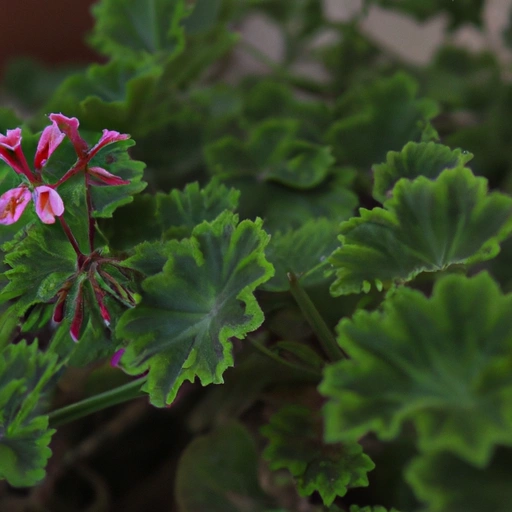Geranium
Description

Geranium, also known as Pelargonium, is a flowering plant commonly used in the culinary world for its aromatic leaves and edible flowers. While there are many species of geranium, only certain types like rose-scented geranium (Pelargonium graveolens) are used in cooking. The leaves of geraniums can be used fresh or dried, and they impart a delightful floral and citrusy note to an array of dishes. The use of geranium spans various cuisines and is appreciated for its subtle flavor and potential health benefits.
Common uses
Geranium leaves and flowers are used to infuse sugars, create aromatic syrups, and flavor baked goods. The petals can adorn salads and desserts, adding a touch of elegance and a light, floral taste. Essential oil derived from geranium is also used in aromatherapy and as a natural preservative in some food products.
Nutritional value
Calories
Geranium leaves are low in calories, making them a delicate addition to meals without significantly altering the calorie count.
Protein
As an herb, geranium provides minimal protein content.
Fat
Geranium is virtually fat-free, contributing only trace amounts to recipes.
Carbohydrates
The carbohydrate content in geranium leaves is negligible, as they are typically used in small quantities for flavoring.
Vitamins
While not a significant source of vitamins, geranium can contain vitamin C and other antioxidants depending on the variety and how it is used.
Minerals
Geranium may offer trace amounts of minerals such as iron and manganese.
Health benefits
Geranium is believed to have anti-inflammatory and antiseptic properties, potentially aiding in wound healing and reducing inflammation. It is also thought to improve digestion and promote relaxation when used in teas or aromatherapy.
Potential risks
Although geranium is generally safe when used in culinary applications, some individuals may experience allergic reactions or skin irritation from handling the plant. It is also important to use only those species known to be edible and to avoid consuming large amounts, as certain compounds in the plant can be toxic.
Common recipes
Geranium leaves are often infused in sugar to create flavored sugars, mixed into fruit salads, or used to decorate cakes and pastries. Geranium-scented syrups can also be used in cocktails and non-alcoholic beverages.
Cooking methods
The most common cooking method involving geranium is infusion, where the leaves or flowers are steeped in a liquid to impart their flavor. They can also be incorporated into baked goods or used as a garnish.
Pairing with other ingredients
Geranium pairs well with light and airy flavors such as lemon, raspberry, and peach. It also complements cream-based desserts and can balance the sweetness in jams and jellies.
Summary
Geranium is an aromatic herb known for its floral and citrus notes, often used in sweet and savory dishes for a subtle yet distinctive flavor. It has a storied history and offers potential health benefits due to its anti-inflammatory properties. When incorporating geranium into recipes, it is essential to source the edible varieties and use them judiciously to avoid any adverse effects.